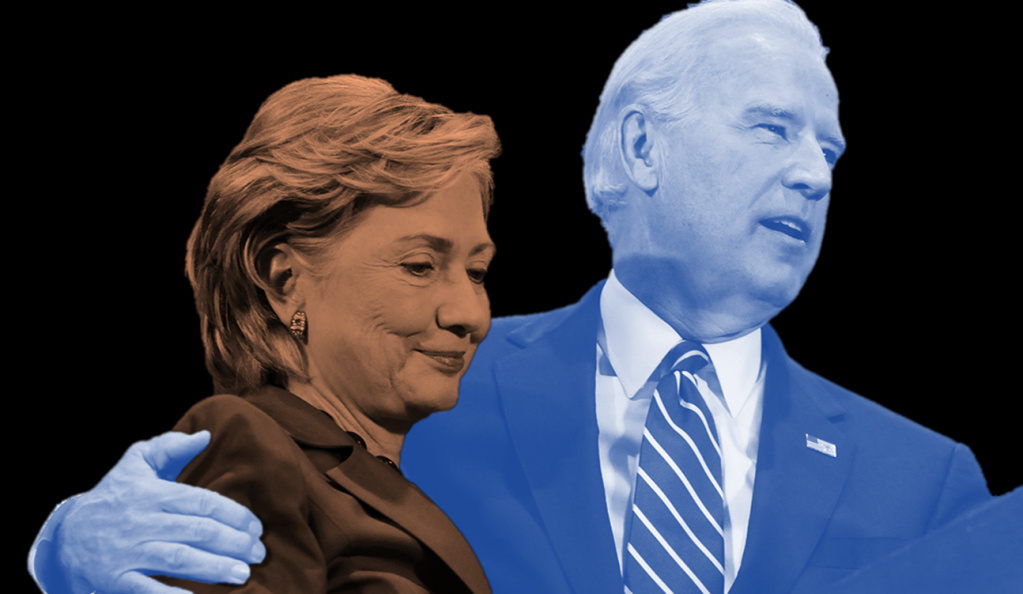
Just a few hours ago, Vice President Joe Biden officially announced his 2020 candidacy. Yet already he’s leading the Democratic primary polls, and has been for a long time now. He has effectively established himself as the front runner simply by virtue of being vice president. As such, much ado has been made of Biden’s place as the party’s leading moderate in the face of a now dominant progressive insurgency. Much has also been said of his supposed connection with blue-collar workers, and his potential to reach out to lost Rust Belt voters while preserving and restoring the legacy of the Obama presidency. Meanwhile, it’s said, his political experience stretching back decades will appeal to Democratic voters looking for the opposite of a Trump-like figure.
This should be sounding familiar. All of these things were once considered to be Hillary Clinton’s greatest advantages as well, right up until they became her fatal flaws.
In 2016, she rallied the party’s centrist establishment against Bernie Sanders, and she presented herself as the successor to Obama and advocated a continuation of his policies. Eight years earlier, when she was running against Obama in 2008, her main demographic was white working class voters in states like West Virginia and Kentucky, which she carried easily in the primary, and she was billed as the candidate of experience and qualification, compared to the young and charismatic one-term Senator. This was her same strategy against Donald Trump, a logical point of attack for a former First Lady, Senator, and Secretary of State against a man who had never held office.
Of course, these approaches ultimately failed to defeat a historically unpopular nominee. Her centrist views alienated the left, galvanized by the Occupy movement five years earlier and already frustrated against the neoliberal consensus cemented by Bill Clinton, and these positions failed to differentiate Hillary from four more years of Obama. This successfully dried up her blue-collar support, as many of these voters have never reaped the fruits of Obama’s economic recovery, while they felt left behind by cultural changes like same-sex marriage and immigration. Her long history in politics only allowed her opponents to attack her policy shifts on key issues, while leaving her the object of anti-establishment frustration as foreign wars dragged on and jobs continued to leave for foreign shores.
All of these attacks will be levied with equal vigor at Biden. Even his announcement video, which centered on the Charlottesville Unite the Right rally and the violence that took place there, was reminiscent of Clinton’s focus on far-right and bigoted rhetoric rather than policy differences. Biden’s past stances on crime and same-sex marriage will be used against him, just like Hillary’s comments on “super predators” and her past stances on immigration and the invasion of Iraq (which Biden, like Clinton, also voted to authorize in 2003). If he succeeds in capturing the nomination, he will be painted as part of the same “liberal establishment” as Hillary Clinton, will fail to rally Democrats of all stripes, and he will likely ultimately lose, just as Hillary did.


